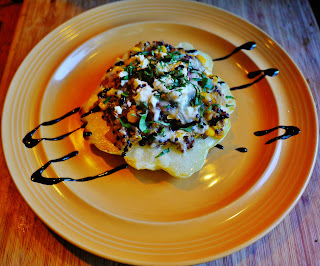I have returned from my hiatus! I know its been way too long since I last posted a recipe, but times got a bit too crazy for me and this project had to take the back burner. However, I'm back and ready to stroke your palates with full force!
Spring is here and I am more than excited to begin working in the garden and watching the plants mature into delicious edibles. My local farmers market started a few weeks back which means the produce will be rolling in and new recipe ideas will be abound for all to try as spring progresses. I really wanted to start off this season with a simple yet delectable salad . It seemed like a perfect way to get myself and the readers back into the groove of The Flavor Effect.
For those of you who have never had the privilege to massage a head of kale, now is your chance! The massaging process makes the kale closely resemble a batch of braised greens. Since there isn't any heat applied, the raw foodies out there should especially love this recipe. There is a perfect combination of sourness from the lemon, sweetness from the strawberries and honey, bitterness from the arugula, spiciness from radishes and a slight crunch from the pecans. Yum indeed!
Massaged Kale Salad:
Serves 5
Ingredients:
1 large bunch of kale (I used the standard green curly leaf, but any variety will do)
1/2 pound loose arugula
8 large strawberries
1 small bunch radishes
1 1/2 cup pecans, toasted
1/4 cup crumbled feta
3 tablespoons olive oil
Juice from one lemon
1/2 teaspoon salt
1/2 teaspoon honey
Directions:
Begin by roughly chopping the pecans and placing them in a pan over a medium flame. Stir occasionally and toast until fragrant and slightly browned. Set aside and allow to cool.
Take the head of kale and remove the leaf from the spine. Rip the leaves into medium sized pieces, then pour on the lemon juice, olive oil and salt. Start massaging the kale by rubbing and squeezing the leaves together between your hands. After several minutes you will notice the volume decrease by about half and the kale will look as though it's been cooked. Drizzle on the honey and mix well. There should be liquid at the bottom of your bowl which will act as the dressing once the other ingredients are added.
Slice slice the strawberries and radishes and add them to the kale along with the arugula, crumbled feta and pecans. Toss together until the salad is fully coated with the dressing. Share and Enjoy!





















































